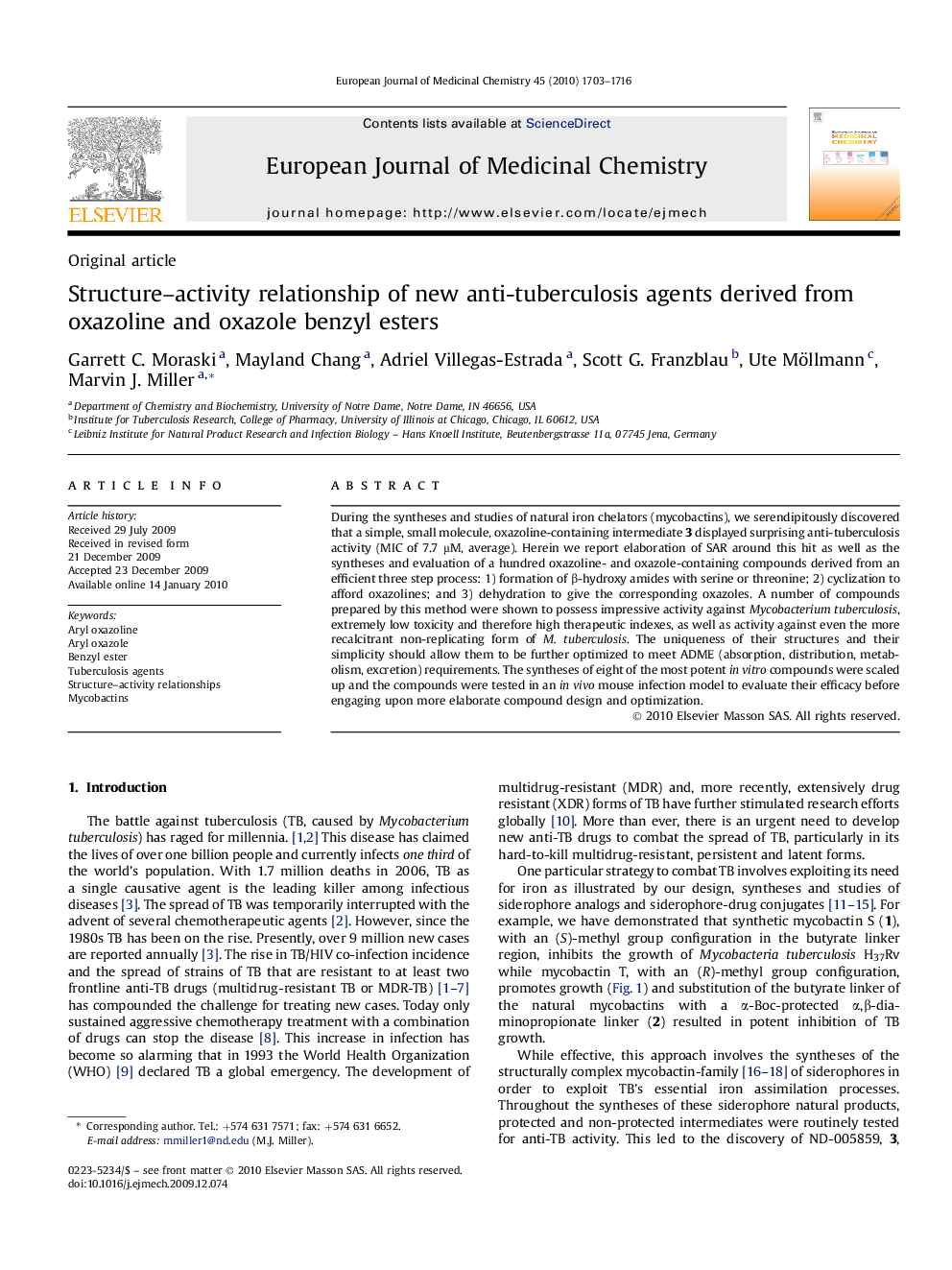| Article ID | Journal | Published Year | Pages | File Type |
|---|---|---|---|---|
| 1396494 | European Journal of Medicinal Chemistry | 2010 | 14 Pages |
During the syntheses and studies of natural iron chelators (mycobactins), we serendipitously discovered that a simple, small molecule, oxazoline-containing intermediate 3 displayed surprising anti-tuberculosis activity (MIC of 7.7 μM, average). Herein we report elaboration of SAR around this hit as well as the syntheses and evaluation of a hundred oxazoline- and oxazole-containing compounds derived from an efficient three step process: 1) formation of β-hydroxy amides with serine or threonine; 2) cyclization to afford oxazolines; and 3) dehydration to give the corresponding oxazoles. A number of compounds prepared by this method were shown to possess impressive activity against Mycobacterium tuberculosis, extremely low toxicity and therefore high therapeutic indexes, as well as activity against even the more recalcitrant non-replicating form of M. tuberculosis. The uniqueness of their structures and their simplicity should allow them to be further optimized to meet ADME (absorption, distribution, metabolism, excretion) requirements. The syntheses of eight of the most potent in vitro compounds were scaled up and the compounds were tested in an in vivo mouse infection model to evaluate their efficacy before engaging upon more elaborate compound design and optimization.
Graphical abstractA large panel of oxazoline (3–57 and 101–105) and oxazole (58–100 and 106–111) benzyl ester analogs were synthesized and screened against H37Rv TB and VERO kidney cells to determine their potency and toxicity, respectively.Figure optionsDownload full-size imageDownload as PowerPoint slide
